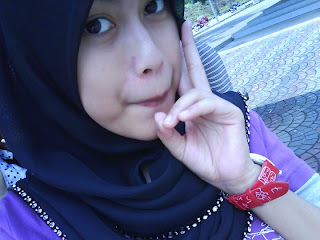Technology & Information Systems
This is our first chapter in this subject.
The Introduction
1. The purpose is to help the student become competent with computer technology.
2. This is also the new ways to communicate, to make relation, and make the sales via Internet.
Do you know how many parts of an information system..?
dont know..?
Nevermind, we gonna tell you about it...
An information system has five (5) parts :
1. people,
2. procedures,
3. software,
4. hardware,
5. data.
Firstly, let's we talk about 1st part of Information System (IS) which is PEOPLE.
People also known as USER. This is the most important part of this IS. Everyday, people use computers and information system, even the contact is direct or non direct.
Now, the 2nd part of IS is PROCEDURES.
Procedures is a set if instructions that performs a specific task; a subroutine or function.
This also known as SUBROUTINE.
That is easy, rigth..?
We go to the 3rd parts of IS which is SOFTWARE.
Software is also known as PROGRAMS that can be used with a particular computer systems.
There are two (2) major software such as system software and application software.
~ System software - this is not single-program but it enables the application software to interact with the PC software.
OPERATING SYSTEM is the one of the example of the system software.
~ Application software - this software have been designed to help the user to perform singular or multiple related specific tasks. These can be categorized as either basic or specialized applications
HARDWARE is the 4th parts of IS.
Hardware is the general for the physical artifacts of a technology and also mean the physical component of the PC system.
There are 4 types of computers: SUPERCOMPUTERS, MAINFRAME COMPUTERS, MINI COMPUTER and MICROCOMPUTERS
- SUPERCOMPUTERS - The most powerful type of computer. These are special high-capacity computers used by very large organizations. IBM's Blue Gene is the example of the supercomputers and the fastest computers in the world.
- MAINFRAME COMPUTERS - Not powerful as Supercomputer but it is capable of great processing speeds and data storage. This machines occupy specially wired, air-conditioned rooms.
- MINICOMPUTERS - Refrigerator-sized machines and also known as MIDRANGE COMPUTERS.
- MICROCOMPUTERS - Least powerful machines but fastest-growing type of computer. There are 4 types of microcomputer: desktop, notebook, tablet PC, and handheld.
In microcomputers, there consists 4 basic categories which is system unit, input/output, secondary storage, and communication.
- SYSTEM UNIT - The container that houses most of the electronic components that make up a computer system. Microprocessor controls and manipulate data to produce information, while Memory is a holding area for data, instructions, and information. Random-access memory (RAM) is temporary storage because the content will be lost if the computer power is disrupted.
- INPUT/OUTPUT - INPUT DEVICES will translate the data into a form that the PC can process. Mouse and keyboard is the common medium that used as input devices. OUTPUT DEVICES will translate the processed data from the PC into a form that human can understand. Monitors, printers, and speakers is most common output devices.
- SECONDARY STORAGE - This storage holds data and programs even after PC has been turned off. The example of secondary storage is Hard disks, USB drives, Flash memory cards, Compact discs (CDs) and Digital versatile discs (DVDs).
- COMMUNICATION - A microcomputers can communicate with other computer systems located nears using Internet. Modem and Routers is the communication device that will allow the user to connect to the Internet.
Last but not least, DATA.
The raw, unprocessed facts, including text, numbers, images, and sounds.
There are 4 common types of files such as document files, worksheet files, database files, and presentation files.
DOCUMENT FILES - created by word processors to save documents.
WORKSHEET FILES - created by electronic spreadsheets to analyse things.
DATABASE FILES - created by database management programs to contain highly structured and organized data.
PRESENTATION FILES - created by presentation graphics programs to save presentation materials.
Nowadays, the advance technology allows people to communicate to entire world without borders. Wireless channels can be found in almost all places. This allows information to move quickly without borders. The world now at our fingertips. the future may be challenging with more competition. Now already advancing, in the future, who knows..?
What is your opinion...?
What ever opinion will you give, we just wait and see....(^.^)























